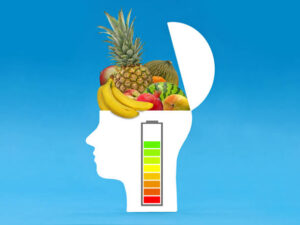Nowadays, having an energy-efficient home has become more and more important since most people are now paying more attention to energy conservation and environmental sustainability.
Achieving an energy-efficient home is more than just using less energy; you have to understand how energy is used, how it is wasted, and how you can use it more effectively.
Energy resources on our planet are finite, so conserving energy through having energy-efficient homes is essential to protecting the environment and saving money.
What is an Energy-Efficient Home?

Energy-efficient homes reduce wasteful energy consumption and emissions, as well as nonrenewable energy consumption. Furthermore, it helps to save money and protects the environment.
Energy consumption affects every aspect of our lives, including the economy, business, and household. The electricity industry produces a significant amount of greenhouse gas emissions and other air pollutants, which negatively affect human health and the environment, and contribute to climate change.
Having an energy-efficient home saves money on utility bills, conserves resources, and reduces emissions.
Features of an Energy-Efficient Home
- Low-cost: Energy-efficient homes have an energy-efficient heating and cooling system that keeps utility bills low since it is well-insulated and airtight.
- Healthy and comfortable: During winter, an energy-efficient home is warm, and in summer, it is cool. It is never too humid or too dry in the home; there is excellent ventilation.
- Adds value: As a result of its efficient fixtures and upgrades, an energy-efficient home adds value to the resale market.
- Eco-friendly: Due to its features and elements, an energy-efficient home’s carbon footprint is shrunk, greenhouse gas emissions are reduced, and energy consumption is reduced.
Energy Conservation vs. Energy Efficiency

An energy-efficient home uses less energy than one that isn’t, whereas energy conservation means using less energy for cost and environmental benefits. Despite their similarities, both concepts require different approaches.
The installation of energy-efficient appliances and electronics can save homes more energy as well as reduce their energy consumption for heating and cooling. Electricity conservation also ensures an energy-efficient home and reduces the amount of electricity you require from the grid.
The Energy Consumption of Household Appliances

A single-family home in the United States consumes about 10,632 kWh annually. Even when we’re not using our household appliances, they silently consume electricity.
If you take the humble refrigerator, for instance, you might think it uses energy only when you open it to grab a snack, but it works hard 24/7 to maintain freshness. It may not seem like a lot, but standing by on your TV or cable box can consume a lot of electricity over time.
Air conditioners and heaters are also elephants in the room. Summer and winter electricity bills are notoriously high when these appliances are used. A programmable thermostat, for instance, can set the temperature when you’re away from home to be a bit higher during the day and cool down when you return.
An appliance’s exact electricity usage can vary depending on a variety of factors, including its size, efficiency, and frequency of use.
In general, we should work towards having an energy-efficient home by using our appliances responsibly and paying attention to how much energy they consume. Our energy bills can be reduced with small changes and ultimately saved.
Why an Energy-Efficient Home Matters
There are several reasons why an energy-efficient home is important. Excessive energy consumption can lead to air pollution, climate change, and serious environmental problems. We can reduce our carbon footprint and ensure sustainable green initiatives when we have energy-efficient homes that guarantee a reduction in our energy usage.
Having energy-efficient homes also has financial benefits. Reducing energy use can result in significant long-term savings, as energy bills can make up a significant portion of household expenses.
12 Tips to Reduce Your Energy Consumption for an Energy-Efficient Home
1. Switch from incandescent to energy-efficient bulbs
It’s easy to reduce your energy consumption by replacing incandescent light bulbs with energy-efficient options. It is estimated that an LED light can last between 50,000 and 100,000 hours, which is a period of five to 10 years.
Incandescent bulbs, on the other hand, typically last only 1,500 hours or 1.4 years. Additionally, energy-efficient bulbs consume considerably less energy than incandescent lights, thus guaranteeing an energy-efficient home.
In addition, you can maximize your savings and control the level of light in your energy-efficient home by using dimmer switches with energy-efficient light bulbs.
The long-run cost of energy-efficient light bulbs may be higher, but they can reduce your energy consumption and last longer, saving you money over time.
2. Dry clothes on a clothesline or rack
Energy consumption is typically highest in households with washing machines and dryers. The sun and wind, on the other hand, are the only resources needed to dry your clothes on clotheslines and drying racks.
Using less energy to accomplish a task or produce a result is what an energy-efficient home is all about. Doing this can help you avoid high energy costs if your living situation permits it. Further, you can use clotheslines and drying racks to harness the sun’s power, which is one of our most accessible renewable resources.
The average U.S. family spends $2,060 on utilities per year, according to EnergyStar.gov. A home’s utility bill is nearly half accounted for by heating and cooling costs, so any reduction in these costs can yield the biggest savings in energy-efficient homes.
3. Use a smart thermostat
You can save energy and have an energy-efficient home by using a programmable thermostat because you can set it to automatically shut down or reduce heating and cooling usage when you’re sleeping, working, or away.
You can save an average of $180 a year by installing a programmable thermostat for an energy-efficient home; they come in different models. Besides air filter indicators, other features can help you keep your HVAC system running efficiently.
For an effective use of a programmable thermostat, take the following steps in your energy-efficient home:
- When the weather is cold, set the thermostat at the lowest comfort level. When it is hot, set it at the highest comfort level.
- “Hold” should only be used when necessary
- Separate weekday and weekend schedules
- If you are away from home or asleep, adjust the temperature
- If your thermostat has an energy-saving mode, use it
- Replace the batteries regularly
4. Insulate and seal air leaks
Sealing air leaks around your house can guarantee an energy-efficient home and also reduce your heating and cooling expenses. Insulating attics, floors over crawl spaces, and basements can save homeowners an average of 15% on their heating and cooling costs, according to the Environmental Protection Agency (EPA).
During the winter, air leaks in your home can cause heat to escape and cool air to escape, increasing your energy consumption. You’ll have to use more energy to maintain a steady temperature, which results in a higher energy bill.
You can have an energy-efficient home by sealing air leaks once you have identified them. The following tips will help you:
- Seal doors and windows with weatherstripping
- Seal the gaps around doors’ bottoms by installing door sweeps
- When you have gaps between two different building materials, caulking is ideal for sealing them
- To keep the house cool in the summer and warm in the winter, insulate the attic, walls, and floors
- Reduce your home’s energy consumption by installing energy-efficient windows
Keeping your home insulated and sealing air leaks will reduce the energy needed for heating and cooling, resulting in less energy wasted and an energy-efficient home.
5. Switch to energy-efficient home appliances
About 13% of the energy you use at home comes from appliances. Consider the appliance’s annual operating cost and initial purchase price before installing new appliances. Over time, energy-efficient home appliances will save you money in the long run. Their operating expenses are reduced by 9% to 25% compared to conventional devices.
When compared to standard appliances, ENERGY STAR appliances are certified to meet the EPA’s energy efficiency standards. Depending on the appliance, energy savings will vary. A clothes washer with the ENERGY STAR label consumes 25% less power and 45% less water than a conventional one, while a refrigerator with the ENERGY STAR label consumes only 9% less power.
There is a wide range of appliances that are ENERGY STAR certified and can guarantee an energy-efficient home, they include:
- Air conditioners
- Televisions
- Washing machines
- Refrigerators
- Dishwashers
- Smartphones
- Computers
You should also consider using low-flow showerheads to save water. Water-saving faucet aerators, showerheads, and toilet displacement devices can reduce hot water usage and use of water.
6. Disconnect electronics after usage
Despite being switched off or in standby mode, many electronics continue to draw power. Standby power and vampire power are terms used to describe this phenomenon in energy-efficient homes.
If you aren’t using electronics, such as a charger, television, or computer, unplug them. Multiple devices can also be disconnected simultaneously using power strips with on/off switches.
7. Maximize the use of natural light
To reduce your energy costs and have an energy-efficient home, you should utilize sunlight as much as possible. Lighting represents a large portion of your energy costs.
North-facing windows are better than south-facing windows in energy-efficient homes. Winter heat is produced more effectively through this approach than through west- and east-facing windows, which let in more direct sunlight and let less heat in.
8. Use renewable energy sources
Increasingly, homeowners are turning to renewable energy sources to reduce their dependence on fossil fuels, combat climate change, and ensure energy-efficient homes. In addition to being widely available, renewable energy is also popular.
Below are some renewable energy sources you can use:
- Solar panels
You can have an energy-efficient home and save money on your utility bills by installing solar panels. Although it isn’t technically an energy efficiency upgrade, it is the best way to make your home green.
- Solar batteries
The solar panels produce electricity that is stored in solar batteries. When the sun isn’t shining, energy-efficient homes can still use solar batteries and generate electricity. Additionally, they can supply backup power when the power goes out.
- Solar water heaters
The sun’s energy heats water in solar water heaters. Using them can significantly reduce energy consumption and provide hot water efficiently.
9. Change air filters
HVAC systems, among other devices in your home, use filters that need to be replaced regularly. By doing this, you could save money, avoid costly air conditioner repairs, and have an energy-efficient home.
Up to 15% of your home’s total energy consumption can be reduced when you occasionally change dirty air filters. You can save energy and money by using clean filters because they are more efficient.
10. Involve and educate your family
Every member of the family must participate in creating a sustainable and energy-efficient home. Engage your family in energy-saving practices and educate them about environmental conservation.
Ensure you turn off lights when you leave a room, unplug electronics, and practice other energy-saving habits. It is possible to reduce energy consumption in your home by working together.
11. Microwave or toast your food
Microwaves or toaster ovens are more efficient than full-size ovens, particularly for families in energy-efficient homes who prefer easy and quick meals.
It takes a great deal of energy for a full-size oven to reach and maintain the right temperature, whereas a microwave oven or a toaster oven requires much less energy and heats up much quicker.
The following tips will help you use your microwave or toaster oven efficiently:
- Make sure your containers and dishes are microwave-safe
- For frozen foods, use the defrost setting, and for leftovers, reheat
- Microwaves and toasters should not be overcrowded to prevent slow cooking
- Maintain an efficient microwave or toaster oven by cleaning it regularly
12. Use cold water to wash clothes
In addition to being a routine and energy-intensive chore, washing clothes with warm water requires the most energy, since the majority of energy goes into warming the water during the process.
Cold water is not only energy-saving, but it is also economically beneficial. If you reduce the temperature of your washing water by 15 degrees, you could save more than $50 a year, and washing clothes in cold water can even extend the life of your clothing and ensure an energy-efficient home.
Conclusion
There is no doubt that energy consumption impacts our resources and the environment. We can reduce our daily energy consumption and guarantee an energy-efficient home in several simple and effective ways.
The reduction of carbon emissions and energy waste can be substantial if all these changes are implemented collectively. We must adopt these practices as environmentally conscious individuals, and inspire others to do the same, ensuring a brighter, cleaner, and more energy-efficient future for our children.







